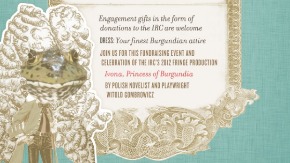By Molly O’Neill
At Peg and Awl, stories bring products to life. Every découpaged candleholder, leather book necklace and sturdy wooden caddy proudly betells the source of its reclaimed materials. A chalkboard tablet is reborn from oak bleachers at the 1918-built Liberty High School, and finished with a leather pencil loop that first served as a World War II gun holster. A scrap of leather from a drawer in an 1835 summer kitchen finds new purpose as a journal cover, sheltering hand-sewn, archival-quality pages.
Perhaps proprietors and crafters Margaux and Walter Kent so value history because their own story rings romantic. They met in 2007 at Walter’s sister’s birthday party, and moved in together two days later. Margaux immediately became pregnant. Walter, one of twelve children, felt confident in raising a child, but the National Guard called him to Iraq five months after Søren’s birth. “He had two months left,” says Margaux, “but then they stop-lossed him. They took him from us.” Walter was gone for a year, and Margaux immersed herself in her art. The tinge of morbidity curling the edges of the photos she took that year reflects what she calls “the lunacy I’d have to instill to take care of a child by myself.” Her fall 2009 art show “Come Wander With Me” featured a young woman holding a baby, staring out to sea from rocky shores.
In the slowly-settling months after Walter’s return, Margaux became pregnant again. Now, two years later, their 1860s Fishtown home bustles with the activity of two towheaded boys. Margaux hammers and stitches while Walter watches Søren and Silas race beneath exposed wood beams. When the babysitter arrives, Walter is able to take a turn in the woodworking shed tucked in their expansive backyard. Raised beds house dormant plants (and one defiant ripe red pepper) and a hand-built swing sways lazily from a tree limb. The scene reflects a new sort of timelessness, in which a modern couple practices artisan craftsmanship with antique materials.
Though Margaux’s company (The Black Spot Books) came first, she and Walter are now both involved in the making of all of Peg and Awl’s wares. “We both touch every single thing in different stages,” says Walter. Before the couple had two children and twenty-hour workdays, they foraged together through flea markets and abandoned houses for materials. Where some artists see Philadelphia as a craft community or stepping stone for wannabe New Yorkers, Margaux calls it “a historic city…a place to gather bits.”
It makes sense that a couple so interested in stories would be entrenched in such a historic area. Margaux loves reading about local history; she says, “It just kind of blows my mind that so many people have existed on the same piece of earth for so many years.” But of course, downtime is a rarity for the two halves of Peg and Awl . Says Margaux, “I pretty much read at night when we’re done with everything, which is like two o’clock at night. We’re delirious, we know we’re going to be waking up at seven o’clock the next morning, we’re barely sleeping in between, so I try to squeeze my reading in.”
But Margaux and Walter have found ways to build community amidst their tightly packed schedules. While the demands of work and parenthood often keep them at home, they’ve learned to network with other artists and small business owners online, forming friendships rooted in knowledge and respect. Says Walter, “So much of what we’ve learned has been from people just telling us what’s out there and how to do things, [like] how to do Etsy…and we just pass it on.” That information has helped Peg and Awl reach clients as far away as Australia and Scandinavia. As the company continues to grow, its story will weave itself into the far corners of the world. But the “once upon a time” will always begin right here in Philadelphia.



